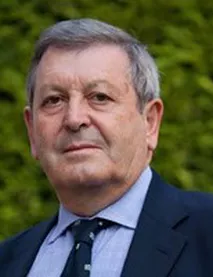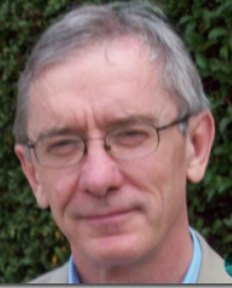
Mike Stone
CertEd, MITG, FRPH
Classical Civilisations
LECTURED AT SEA WITH
Cruise & Maritime Voyages – on cruises to Norway and Eastern Mediterranean to Singapore, Discovery Egypt – Nile cruises from Luxor to Aswan
Michael Stone, BA (Hons), CertEd, MITG, FRPH
I graduated from the Institute of Archaeology, University of London and specialised in the Archaeology of the Roman Provinces. I have excavated in Italy, South of France, London, Essex and Wiltshire and have worked in museums in London, Burton-on-Trent, Swindon,
Cricklade and Chippenham.
I have lectured in archaeology, heritage and tourism for the Universities of Bournemouth and Bath Spa, along with archaeology courses at Further Education colleges in London, Stevenage, Chippenham and Lackham.
After retirement from Chippenham museum as curator in 2010 I currently work as a freelance expert lecturer/tour manager for UK and European specialist heritage providers. I have guided groups in many of the European countries since 2010 and work as a specialist archaeological and history lecturer for the European cruise market. Also, for the last 15 years, I have lectured and guided for the Association for Roman Archaeology visiting
Europe, North Africa and the Eastern Mediterranean.
I have also written and published 5 books on history and appeared on National television, BBC Radio 4 and have made numerous local radio broadcasts in Wiltshire.
Please view
Video: https://www.youtube.com/watch?v=xWs_dZ9ovCs&feature=youtu.be
Presentations
SECTOR Hong Kong to Chennai
LECTURE 1: Arabian Travellers and the Rediscovery of Arabia and Petra
This lecture charts the European rediscovery of Arabia and its archaeological sites from the 16th century. Through the eyes of explorers like Burckhardt, Burton, Palgrave, Sadlier and Lawrence we can follow their adventures and look at their major discoveries, particularly at Petra and follow through the early descriptions and excavations which brought the famous UNESCO Rose Red City,’ half as old as time’, to the attention of the western world.
LECTURE 2: Petra, the Nabataean’s and Trade
This lecture will cover the excavations and surveys of Petra and its surrounding area, looking at the fusion of archaeological styles from King Aretas I c.168 BC to the fall of Petra in 106 AD. Recent and ongoing archaeological excavations have added a great deal of new knowledge as to how Petra looked in its heyday, ranging from the large public monuments to the numerous houses where the Nabataeans lived. The carving of both Royal tombs and other Nabataean tombs never cease to amaze visitors in their size and use of architectural elements created by the wealth of the trade routes.
LECTURE 3: Egypt before the Pharaohs
This lecture will look at the archaeology of the rise of ancient Egypt before the first Pharaoh of the First Dynasty. Around 3000 BC all the elements of a complex civilisation are in place and we can follow through a rapid advance in art, technology, architecture and social organisation that was to herald in the Old Kingdom in an age of highly centralised Royal power, which found its greatest expression in the construction of the great pyramids.
LECTURE 4: Ancient Egypt Lost and Found
This lecture will chart the discovery of the great civilisation of ancient Egypt by the Europeans from the 17th century onwards. With the arrival of Napoleon Egyptology begins as an academic subject and we can look at the wonderful drawings and etchings of numerous monuments, many of which do not survive. This was also the period of the great collectors, like Giovanni Belzoni, who discovered Abu Simbel and sent back to London many of the large objects in the British Museum. The story of the pyramids and their excavation from this period linked to the finding of the Rosetta Stone in 1799 opened up the world of ancient Egypt to the western world.
LECTURE 5: Tutankhamun and Egyptomania
This lecture will look at Howard Carter and his world-famous discovery in 1922 of a nearly intact Royal tomb in the Valley of the Kings. The contents of the tomb, ranging from the great Royal burial to chariots, chairs and caskets, give us a view of life as a Pharaoh in a momentous period in Egyptian history. The discovery of Tutankhamun’s tomb and earlier discoveries led to a western Egyptian revival in art and architecture, which is still very popular today.
LECTURE 6: Alexandria and the Recovery of the Lost Sunken Cities
The famous city of Alexandria is now under modern Alexandria and has sunk into the bay, however archaeologist Franck Goddio carried out underwater surveys and recovered the sites of lost palaces and ships. This work was extended into the Abukir Bay, which resulted in the discovery of many lost Egyptian cities that sank into the sea over 1200 years ago. This pioneering work, which began in 1999, is continuing and we can use their spectacular finds to describe the lost sites of Thonis-Heracleion, Naukratis and Canopus. These cities were some of the great trading and religious centres of ancient Egypt, which came under the control of Alexander the Great and the Ptolemaic rulers and ended with the suicide of Cleopatra.
LECTURE (Reserve 1): The Development and Construction of Egyptian Pyramids
Archaeology and experimental archaeology has now allowed us to give a fairly good picture of the growth of the pyramid age and how they were actually built.
LECTURE (Reserve 2): The Development and Construction of Egyptian to Ptolemaic Temples
Using the river Nile as a guide, we can travel from Cairo to Aswan looking at the remarkable survival of temples from Saqqara , Abydos, Luxor, Karnak, Esna, Edfu, Kom Ombo and Philae.
SECTOR FROM Aqaba to Greenwich
LECTURE 1: The Seven Wonders of the Ancient World – in Myth and Reality
This lecture will chart the creation of the ancient world’s view of what was a wonder amongst many other wonders in the ancient world. Many myths have grown up about their origin and their appearance and it is often amusing to look at some of the outlandish views of what the Seven Wonders looked like and were used for. Over time only the Great Pyramid survives as a testament to the Seven Wonders and its through archaeology and modern reconstructions that we can attempt to show what these famous monuments were like and understand why they were given the title ‘Seven Wonders of the Ancient World’.
LECTURE 2: Great Cities of the Ancient World – Athens in the Golden Age of Pericles
This lecture will chart the growth of the ancient Greek culture from the Minoans to the Byzantine period. Many past archaeological discoveries and the standing remains of temples and sanctuaries allow us to show the growth over 2000 years of the Greek civilisations and its capital Athens. We can follow the great golden age of Athens from the 5th century BC with the building of the Parthenon, theatres, sanctuaries and the Agora. The resulting classical styles which evolved have remained an important part of architecture right up to the modern period.
LECTURE 3: Great Cities of the Ancient World – Marvels and Monuments of Ancient Rome
This lecture will chart the rise of the Romans to become the dominant culture with the largest empire in the ancient world. Using archaeology and archaeological reconstructions we can follow the Romans as they develop new ideas and techniques in buildings. Using computer imagery we can give a fairly accurate impression of how the forums, temples, baths, basilicas , amphitheatres and the water supply looked from the 1st century AD to the 4th century AD.
LECTURE 4: Life and Death in Pompeii and Herculaneum
The destruction of Pompeii and Herculaneum in AD 79, along with other small towns and villas around the Bay of Naples, became a major discovery from the 16th century onwards. This lecture will follow the early excavations which were a major attraction for many rich Europeans on the Grand Tour. We will also follow the new era of excavations and conservation linked to the re-examination of both the finds in the Naples museum and the buildings themselves, which give us an amazing look at the Roman empire at its height in the 1st century AD.
LECTURE 5: A Day in the Life of Ancient Rome
Using ancient sources, artefacts and archaeological discoveries we will follow two Romans as they travel from the Bay of Naples to ancient Rome on a business trip, showing how Romans travelled and organised their day as they entered Rome, visiting markets and friends and making contracts. Later we can follow them as they visit the games in the Colosseum and ending the day at a Roman banquet in the villa of a rich Roman. Use will be made of the latest computer generated reconstructions linked to readings from relevant classical sources to bring the ancient world alive.
LECTURE 6: Romans in the South of France
A tour of the important remains of aqueducts, amphitheatres, theatres, baths, forums and urban centres, which show the early Romanisation of the south of France.
LECTURE (Reserve): Romans in Southern Spain
A tour of Roman sites in the south of Spain concentrating on Merida, the ‘Pompeii of Spain’, with its many surviving monuments, dams, bridges, mosaics and artwork, which show the rich culture of the natives who adopted the Roman way of life.
SPECIALIST LECTURED WITH
Ancient World Tours – Libya and Egypt, Travel Editions – UK, Italy and Greece, Association for Roman Archaeology – Germany, France, Spain, Italy, Sicily, Greece, Crete, Egypt, Tunisia, Libya and Jordan. Saga – UK and France, Stakis Hotels, Hilton Hotels, Paramount Hotels – Heritage events








